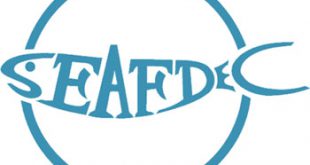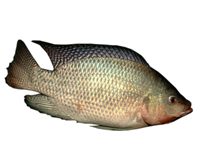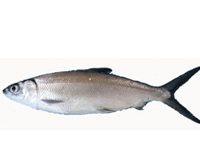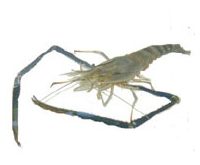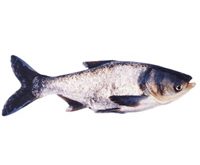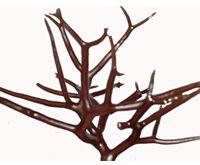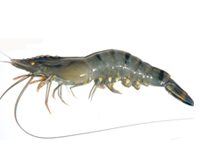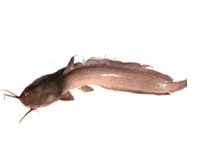Substrate matters Even bottom feeders like abalone know the importance of good substrates Marine invertebrates use a range of physical, biological and chemical signals to influence their metamorphosis and larval settlement. In the abalone hatchery environment, these could include food sources and appropriate substrates. To determine what combination of substrate and food source is best for abalone larvae, Rolando Gapasin and Bernice Polohan of SEAFDEC/AQD subjected Haliotis asinina postlarvae to different “substrate-diatom” complexes, together with gamma-aminobutyric acid or GABA. Substrates made of plexiglass, rubberized canvas, fibrocement board and corrugated plastic were placed on the floor bottom of four plexiglass aquaria. Each of these were then inoculated with the following diatom species: Amphora sp., Nitzchia cf. frustulum, a 1:1 combination of …
Read More »Rossea H. Ledesma
Abalone: we need our space
Abalone: we need our space! For abalone to grow well, low stocking rate is good, high stocking bad, and reduced oxygen downright ugly As one of the major countries harvesting abalone, the Philippines is mostly dependent on wild catch since commercial grow-out system for Haliotis asinina is still a pioneering effort. Due to the low profit margin in land-based culture systems, alternative means such as sea cages are being pursued. A study conducted by Emmanuel Capinpin Jr and his colleagues determined the effects of different stocking densities on the growth, feed conversion ratio (FCR) and survival of abalone using the cage system. Employing three trials using different stocking densities, the researchers raised abalone, with sizes ranging from 16-20 mm and …
Read More »Abalone grow-out culture
Technical Assumptions Initial size 2.0 cm, 1.5 g (P5/pc) Final size 5.5 cm, 50 g (P300/kg, 20 pcs/kg) Culture period (months) 9 Seaweed price (P/kg) 4 Number of crops/year 3-4 Survival rate (%) 90% Feed Conversion Ratio 20-25 Project Duration (years) 4 Investment Capital outlay 30,000 Mesh cages 19,600 Long line 7,400 Anchors 2,000 Other materials 1,000 Investment cost (x 3 crops (VC)) 98,640 Abalone juveniles 21,000 Salary, extra labor 1,860 Seaweeds 10,020 Total capital investment required 128,640 Costs-and-Returns Item 1 module Revenue/crop (189 kg/module x P300/kg) 56,700 Variable cost (P) 32,880 Fixed cost (P) 10,112 Total production cost (P) 42,992 Net income/crop (P) 13,707 Net income/year (P) 41,122 Return on Investment (%) 137 Payback …
Read More »Abalone hatchery & nursery
Technical Assumptions Project duration 5 years Number of breeders, female + male (70-80g) 800+200 pcs Group spawning frequency per month 2x Number of spawning breeders/month 256 Ave. spawning fecundity per breeder 250,000 eggs Total egg production/spawning cycle 32 million Total veliger larvae production (40%) 12.8 million % Settlement rate 2.50% % Survival of early juvenile at 90-day period 4% Total early juvenile production per run (10-15mm) 12,800 % Survival after a 60-day nursery 85% Total advance juveniles production per run (20-25mm) 10,880 Number of production cycles per year 20 Total juvenile production per year 217,600 Investment Capital Investment 1,061,000 Annual Depreciation 93,942 Depreciation per crop 4,697 Salvage Value after 5 Years 602,125 Costs-and-Returns Items …
Read More »A Day at AQD
Malalison island community – Beneficiaries of AQD’s 2011 live benefit auction
Tilapia
Why tilapia hatchery/culture? Tilapia, also known as “aquatic chicken,” grows fast and easily breeds in captivity Technology for its propagation and culture requires little input Hatcheries can readily supply the seedstock the industry needs Tilapia has become an effective biocontrol agent for luminous bacteria Generally occupies a smaller area than other culture species
Read More »Milkfish
Why milkfish hatchery? Hatchery technology for large-scale seed production is already established With seasonal shortage of milkfish fry from the wild, the hatchery option is a good one Early fear of getting deformed market-sized milkfish is no longer an issue Increased acceptance from grow-out culturists once its performance had been demonstrated satisfactorily
Read More »Freshwater prawn
Why freshwater prawn culture? High export potential Can be a good alternative to tilapia and tiger shrimp Can be used in polyculture with other species Has an established market niche
Read More »Bighead carp
Why carp culture? Has low protein requirement during culture Can be used as raw material in value-added fish products Can be used in polyculture with other aquaculture species Grows fast, reaching 2-4 kilograms in 4-6 months
Read More »Seaweeds
Why seaweed culture? High return on investment Demand for seaweeds is high in the local and international markets Culture period could be as short as 45 days under optimal conditions Environment-friendly Could be a source of supplemental income for small fisherfolk associations and people’s cooperatives
Read More »Tiger shrimp
Why shrimp culture? New technology on shrimp farming in brackishwater ponds incorporates pollution management Could be integrated with commodities such as tilapia, bivalve, seaweed Environment-friendly techniques, like crop rotation and improvement of feed formulation can be employed Greenwater technology makes it possible to inhibit disease-causing organisms
Read More »Catfish
Why catfish culture/hatchery? Resistant to diseases Can be stocked at high densities Has low requirements for water quality Requires less area required for culture Technical Indicators Catfish Seed Production Breeders mature in 6-8 months, and can be obtained from lakes, rivers, tributaries and other freshwater bodies. Sexes can be distinguished externally by the presence of the urogenital papillae in males and a round opening in the females at the lower, ventral side of the body. Catfish Grow-out Stocking density ranges from 10-20 pcs/sq. m depending on water quality and supply. Staggered stocking of ponds is done every 15 – 30 days. Sample 30-50 pcs catfish monthly to monitor ABW and adjust daily feed ration. Downloads Catfish Hatchery and Grow-out …
Read More »Mud crab
Why mudcrab culture? A mangrove-friendly or sustainable aquaculture Mudcrab is well-liked for its taste, texture and nutritive value High demand in the local and export markets Could be polycultured with other species, such as milkfish Could be an investment for people’s cooperatives and fisherfolk organizations who manage a mangrove area under a stewardship contract
Read More » SEAFDEC/AQD Southeast Asian Fisheries Development Center | Aquaculture Department
SEAFDEC/AQD Southeast Asian Fisheries Development Center | Aquaculture Department
